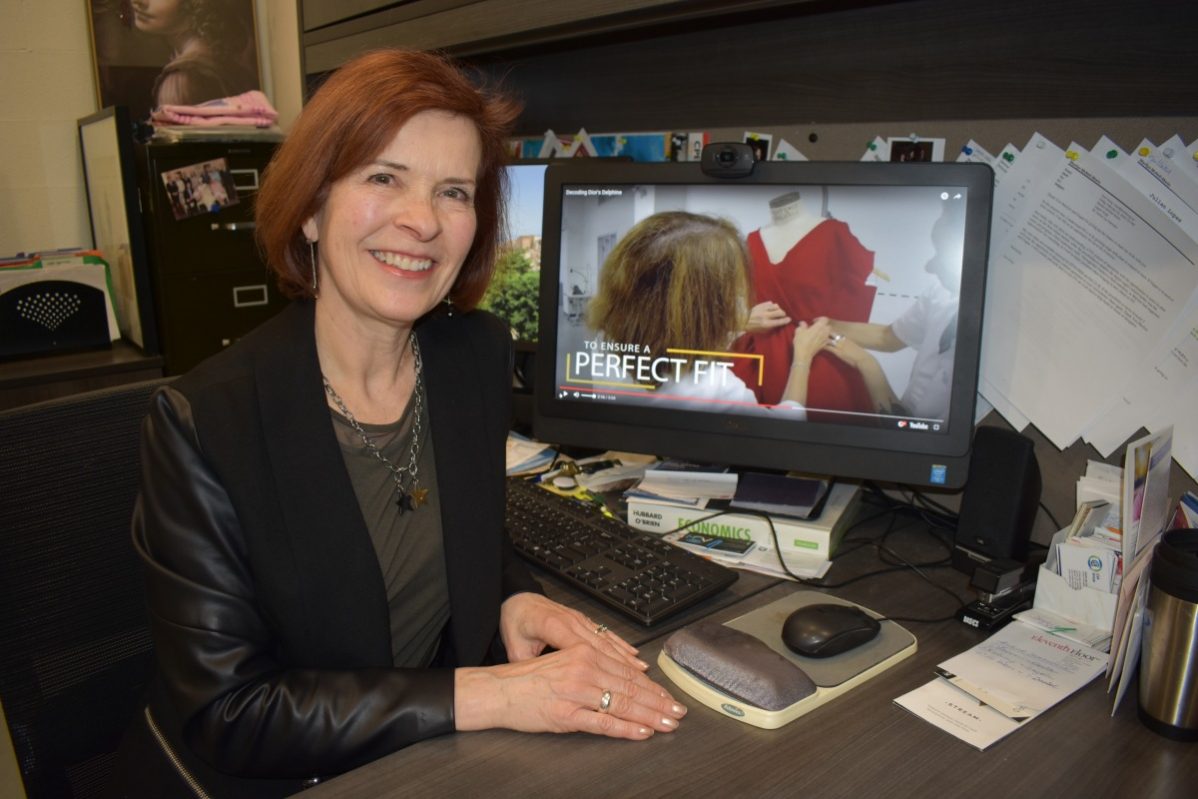GBC adopts Optitex 3D tool to assist fashion students with pattern making
Technology has changed the face of the fashion industry, and the way fashion is taught in school.
Marilyn McNeil-Morin, director of fashion exchanges at the George Brown College (GBC) school of fashion studies, said there are different softwares which can help designers develop a pattern, some of which are taught at GBC such as PAD or Gerber.
However, all those softwares are 2D tools, meaning that after creating the pattern and using the tool, pattern makers still need to go through a trial-and-error process called a sampling procedure, where they repetitively make real samples and test them out on an actual model until the sample fits.
That may come to an end with a new 3D tool named Optitex has been introduced to the apparel technical design program.
“This whole process of going through samples is expensive, time-consuming and it’s lengthening the product development,” said McNeil-Morin. “The whole idea with Optitex is you can, now with the 3D software, in some way shortcut the sampling procedure.”
Optitex offers a “virtual sampling,” or “virtual stitching” process, in which pattern makers can virtually stitch the pieces they create together and put them on an avatar which has the standard measurements of the company’s target market.
Being newly introduced to the apparel technical design program as part of the pattern drafting software course, Optitex 3D is still in its initial phase of testing. More research needs to be done about its application in the fashion industry and more particularly, in teaching fashion design.
One project to test the use of Optitex 3D tool is Decoding Dior, a collaboration between GBC professor Berta Pavlov and the Royal Ontario Museum (ROM). Pavlov used different pattern making software programs, one of which was Optitex, to recreate 10 pieces of Dior’s “New Look” collection from scratch.
“(Optitex) was very helpful because with doing the research project, I wouldn’t have had time to sew up all the files that I had done,” said Pavlov. “So it was very exciting to see that my pattern came together and it worked and it fitted exactly.”
With a new grant of $1 million for GBC’s Fashion Exchange from the Ministry of Research, Innovation and Science, McNeil-Morin said that the research funding will help fund several research projects that involve the suite of equipment including Optitex 3D.
“The (funding) is enabling us to conduct research that we didn’t really have the equipment to do before,” said McNeil-Morin. “So body scanning and taking those measurements and transforming them into 2D pattern making and then 3D virtual sampling—those are all the projects that we’ve got lined up to work on with industry partners.”


